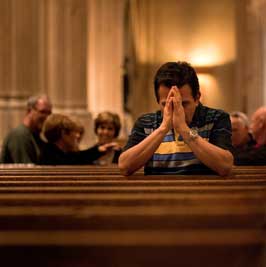NATIONAL STUDY

There have been a number of National Studies contemplated for forecasting the sustainability of the United Methodist denomination. ILCG has taken a more sophisticated approach than those considered in the past in an effort to paint a more accurate portrait of the denomination’s future. ILCG’s sophistication resides in the fact that it makes use of extensive data collections and appropriate statistical tools of analysis. ILCG utilizes data from end-of-year local church reports, clergy pension records, demographic information about the US population, physical addresses of the churches, measures of inflation, records of mergers of annual conferences, life expectancy tables, and attendance patterns among other mainline denominations. Additionally, ILCG has developed a rich body of evidence which includes the use of completed studies of new church starts, the impact of debt upon the local church, drivers of church growth, and local church spending patterns.
The National Study includes various working components. A worship attendance component incorporates the known drivers of worship attendance. This component incorporates new church starts and predicts church closures. The clergy component identifies every elder and provisional elder in the denomination. The component “ages” each elder and predicts the time of retirement and death. It incorporates new elders into the denomination, each having his or her own assigned age and gender. It separates elders into two groups: those seeking appointments in the local church and those seeking employment beyond the local church. A local church component identifies local churches seeking elders as appointed clergy.
The National Study provides an aggregated forecast to the United Methodist denomination in its entirety. ILCG has applied a similar forecasting process to both the conference and local church levels of the denomination. Each variant of the model provides actionable information for church leaders at various connectional levels to discern the future and implement policies that will affect positive change throughout the denomination.

Why We Do It
The world is missing out on the hope, truth, and power of the Gospel. The local church remains the best vehicle by which its message is spread. The secular press continues to challenge the work of the Church with its predictions of decline and rejection among the younger generations. Instead, the local church can grow and prove its capacity to change lives and communities. Growing Christian churches among our mainline denominations and beyond is a real possibility.

What We Use
- Local Church Geodata
- Local Church Indicators: Worship Attendance and Congregational Giving—past 5 years
- Local Church Spending Patterns—Past 5 years
- Pastoral leadership—Past 10 years
- Establishment of Benchmarks
- Statistical projections—Next 5 years

What We Do
ILCG works side by side with local church leaders to identify internal deficiencies through comparisons with thriving peer group outcomes. Comparisons bring broad solutions that are refined or customized by local church leaders. In the end, the local church becomes more effective in ministry to community and in making disciples of Christ.

How We Do It
ILCG takes a comprehensive approach to measuring and understanding the impacts of the changing composition of churches. Based upon statistical analyses of over 1 million local church records—about 32,000 churches over 28 years — sophisticated simulation models have been developed to scrutinize past experience, clarify present standing and discern the factors that provide the foundation for a vibrant future.


